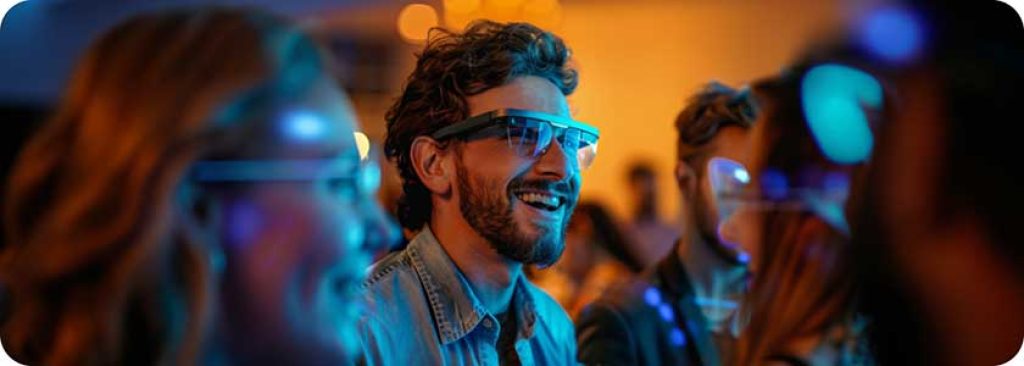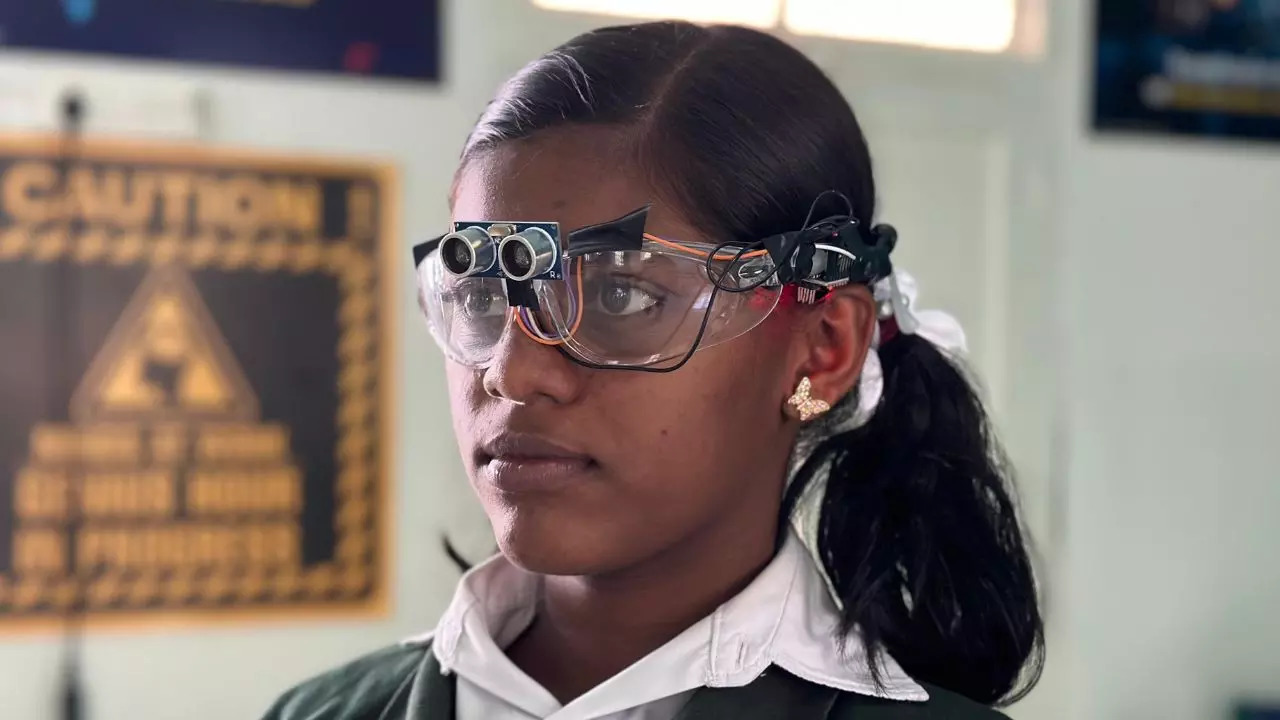Empowering Self-reliance With Assistive Modern Technology for the Blind
The combination of assistive innovation for people who are aesthetically impaired or blind represents a substantial innovation in promoting independence and boosting quality of life. With a variety of gadgets-- from display visitors to ingenious tactile devices-- these technologies not just facilitate navigating and interaction but additionally promote social addition and engagement in numerous aspects of life.
Recognizing Assistive Innovation
Although assistive modern technology has actually developed significantly throughout the years, its fundamental objective stays the very same: to enhance the lifestyle for individuals with specials needs, specifically those who are visually impaired or blind. This modern technology includes a wide series of tools and gadgets that facilitate self-reliance and performance in everyday activities.
Assistive innovation can be classified into high-tech and low-tech options, each designed to meet specific requirements. Sophisticated tools usually consist of software applications, specialized equipment, and flexible devices that make use of innovative innovation to give assistance in different contexts. Alternatively, low-tech services might involve daily items that are modified to boost availability, such as magnifiers or tactile pens.
The combination of assistive technology right into the lives of individuals who are blind or aesthetically impaired not just advertises freedom yet also cultivates social incorporation and participation in academic and specialist atmospheres. By leveraging these technologies, users can navigate their surroundings, gain access to info, and connect effectively, thereby improving their total lifestyle. Comprehending assistive technology is vital for caretakers, supporters, and experts that intend to sustain individuals in maximizing their possible and achieving higher self-reliance.
Kinds Of Assistive Tools
Assistive gadgets for the blind and aesthetically damaged are important tools that enhance daily living by dealing with particular challenges experienced by customers. These tools can be generally categorized right into 3 main kinds: optical gadgets, digital gadgets, and sensory gadgets.

Sensory devices, such as Braille display screens and responsive maps, supply alternate methods to receive details. Braille shows transform electronic message into Braille, making it possible for individuals to check out touch. Tactile maps supply spatial understanding through elevated structures and lines, enabling much better environmental awareness.
With each other, these assistive tools encourage people with visual problems to involve even more completely with their environments, promoting higher freedom and self-confidence in daily activities.

Effect on Daily Life
The combination of assistive modern technology into the daily lives of people who are visually damaged or blind significantly enhances their capability to browse and engage with the world around them. Instruments such as display visitors, Braille presents, and mobile applications help with access to info, allowing individuals to involve with electronic web content, connect effectively, and handle everyday tasks separately.
Moreover, technologies like smart glasses and navigation applications provide real-time aid in unfamiliar environments, improving movement and confidence. These devices make it possible for customers to recognize barriers, read indications, and even recognize faces, thus fostering a sense of autonomy in public areas. Additionally, home automation systems, which can be controlled via voice commands, permit people to handle their living atmospheres much more effectively, boosting convenience and safety and security.
The effect of assistive technology expands past functional jobs; it advertises social addition and psychological health. By connecting the space in between individuals and their environments, these modern technologies encourage users to participate totally in neighborhood tasks, seek instructional opportunities, and take part in purposeful partnerships. Inevitably, the innovation of assistive innovation contributes in redefining the opportunities for people who are blind or aesthetically impaired, causing a much more easily accessible and inclusive society.
Success Stories and Endorsements

One more effective testimony originates from Mark, a recent university grad that made use of display analysis software throughout his academic trip. This technology enabled him to accessibility training course materials and get involved in conversations, ultimately resulting in his effective change into the workforce. Mark credit reports assistive modern technology for empowering him to achieve his occupation objectives, highlighting its duty in leveling the having fun area for individuals with aesthetic impairments.
Additionally, recreation center have reported boosted engagement in their programs many thanks to the intro of easily accessible electronic systems. These systems have actually made it less complicated for individuals to link, share sources, and support each other. These success stories collectively highlight the profound impact of assistive innovation in view it fostering independence, improving high quality of life, and breaking down barriers for the blind and visually impaired community.
Future Trends in Assistive Technology
Arising technologies are positioned visit here to change the landscape of assistive technology for individuals that are aesthetically impaired or blind. Advancements in artificial intelligence (AI) and artificial intelligence are boosting the abilities of gadgets, allowing even more user-friendly user experiences. As an example, AI-driven applications are significantly able to review and acknowledge items text out loud in real-time, offering users with beneficial info regarding their surroundings.
Additionally, improvements in wearable technology are developing brand-new opportunities for independence. Smart glasses furnished with increased reality attributes can overlay vital details onto the user's field of vision, promoting navigating and interaction with the atmosphere. Moreover, the assimilation of Internet of Things (IoT) devices is streamlining accessibility in smart homes, enabling individuals to manage devices and obtain alerts via voice commands or responsive user interfaces.
The advancement of braille display screens and responsive comments systems is likewise growing, promoting access to electronic material and improving interaction. As these modern technologies proceed to evolve, they assure to boost everyday living, academic chances, and employment leads for people with visual impairments. Continuous collaboration in between technologists, users, and campaigning for groups will be vital in making sure these developments meet the demands of the area successfully.
Final Thought
In conclusion, assistive technology plays a pivotal duty in improving the independence of people who are visually damaged or blind. By supplying vital tools and sources, these technologies promote enhanced gain access to, interaction, and navigation to details, thus fostering autonomy and self-confidence. The transformative influence of assistive devices not only advertises reliable communication with the setting but likewise urges social inclusion and involvement in various elements of life, inevitably encouraging users to grow within their neighborhoods.
The combination of assistive modern technology for people that are blind or visually damaged represents a read this post here substantial improvement in cultivating self-reliance and boosting quality of life.The combination of assistive modern technology into the lives of individuals that are blind or aesthetically harmed not only promotes freedom yet additionally fosters social incorporation and involvement in specialist and academic settings. Inevitably, the advancement of assistive innovation is critical in redefining the opportunities for people that are blind or aesthetically damaged, leading to an extra accessible and comprehensive culture.
Many individuals who are aesthetically damaged or blind have shared motivating success stories that highlight the transformative effect of assistive technology on their lives.In conclusion, assistive technology plays a pivotal role in enhancing the independence of people that are blind or visually impaired.